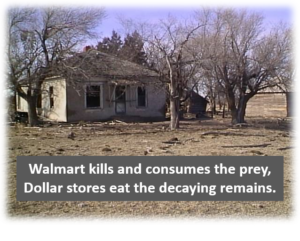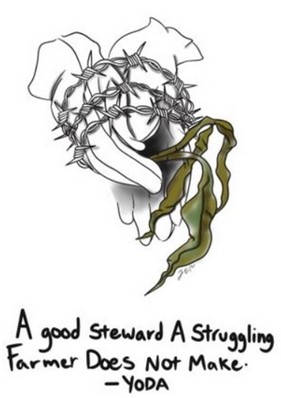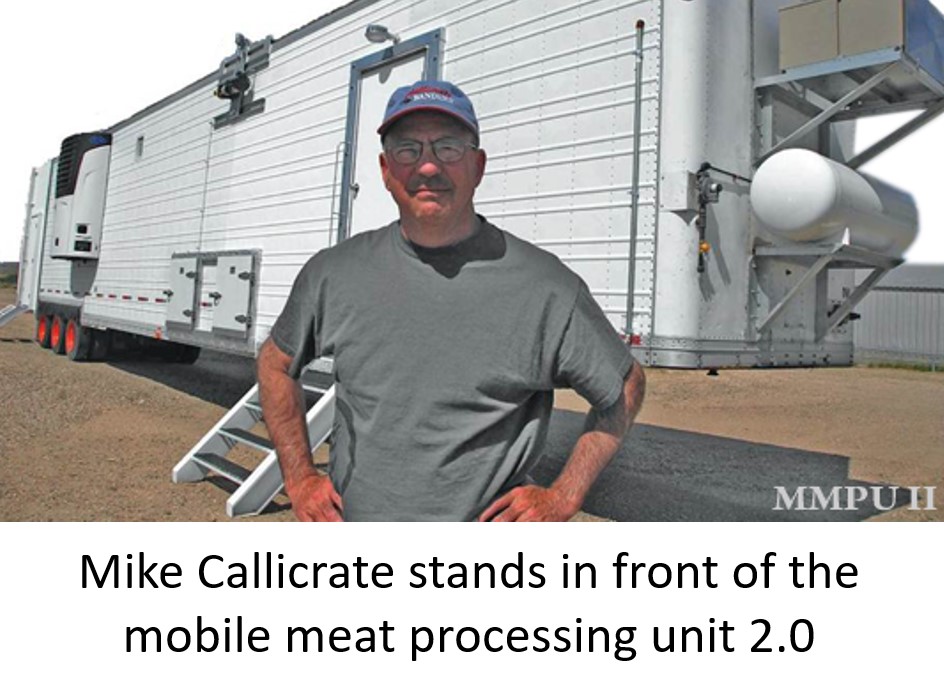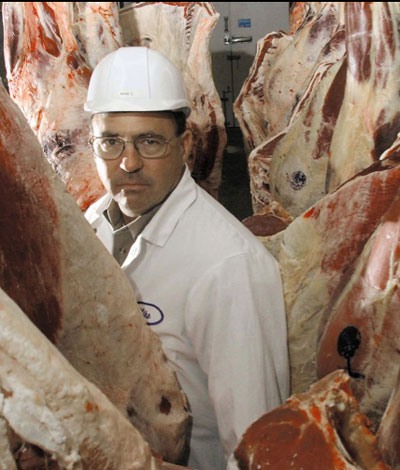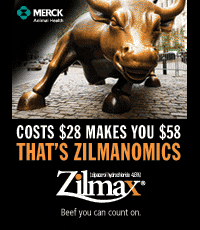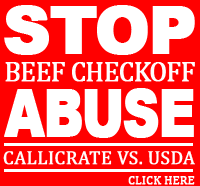Published on Tuesday, September 9, 2003, by THE AGRIBUSINESS EXAMINER
GUEST COMMENTARY:
HIGH CATTLE PRICES DOESN’T MEAN THE MARKET IS WORKING
MIKE CALLICRATE: Too many cattle feeders (and myself in particular) are missing out on the recent sharp increase in cattle prices. Many of us are no longer in business or are feeding far fewer cattle due to prolonged equity losses. Cow-calf producers are enjoying the increased income, but many are rightly concerned about what will happen next year if the ever-diminishing numbers of independent cattle feeders lose more money and are forced to quit.
Here’s the game independent feeders have been forced to play since the big meatpackers illegally monopolized the cattle markets. They buy replacement cattle at auction, in a competitive market, with many buyers and sellers. They put up enormous capital, assume large amounts of risk, and then practically give their finished cattle to a single packer-buyer in a non-competitive, predatory market. Any wonder why so many feeders have left the business? Any wonder why the cattle feeding industry is so highly concentrated?
Few independent feeders seem to recognize the stacked deck they are playing into when the competing bidder at the feeder cattle auction is the same meatpacker they sell their finished cattle to. That same packer has continuously reported record earnings as a result of monopoly business practices, earnings not available to the independent feeder for the purchase of feeder cattle.
Markets, like highways, should be accessible to everyone on an equal basis, not by invitation only or just for the chosen few.
Today’s markets are manipulated to benefit the big meatpackers and retailers. Vertically-aligned nonindependent cattle feeders exchange the service of providing “captive” finished cattle, which are not price negotiated through a competitive bid process, for highly preferential prices, giving them an enormous unfair advantage at the feeder cattle auction.
The big meatpackers and retailers are frustrated by the tenacity and stubbornness of independent cattlemen reluctant to succumb to the complete vertical integration of the cattle and beef industries. But if they can’t tempt the independents to change by offering low-ball preferential treatment, they will eventually bankrupt the ones who are left with unfair and non-competitive marketing practices.
Markets, like highways, should be accessible to everyone on an equal basis, not by invitation only or just for the chosen few. Without immediate enforcement of the Packers and Stockyards Act, and restoration of fair, open, and competitive markets, auction firms will soon be left with only meatpackers bidding at a fixed identically low price. Enforcement of the P&S Act, one of our nation’s most powerful antitrust laws, is the only thing standing between cattle producers and the Tyson-ConAgra-Cargill model of chicken farmer serfdom.
Mike Callicrate is a farmer, rancher, businessman and co-founder of the Organization for Competitive Markets. After graduating from Colorado State University with a degree in animal science, Callicrate moved to northwest Kansas to farm and ranch. Recognizing a need for a feedyard in the area, he built the first of two local commercial feeding operations in 1978. About ten years ago, he began a drive for price discovery reform, after becoming disgruntled with the formula agreement his local buyer was using to buy cattle. Since that time, he has spoken out against consolidation of the meatpacking, processing, and retail segments of the beef industry, and the devastating effects of captive supply.
CATTLE PRODUCERS UNLOADING LIVESTOCK WRECKS HAVOC ON MERC FLOOR TRADERS
by GREG BURNS, CHICAGO TRIBUNE
For more than a century, the Willrett family has raised cattle on a stretch of land just west of DeKalb, but rarely at prices as rich as these.
With consumer demand for beef running strong and a “mad cow” scare in Canada crimping supplies, cattle futures prices have surged to a 10-year high at the Chicago Mercantile Exchange. Many producers are unloading their livestock as fast as possible, hoping to make up for the lean years that preceded the current boom.
Jamie Willrett, however, is standing against the stampede. “We’re moving cattle on schedule,” he said from his 2,500-head operation outside Malta, Ill. “The temptation is to sell everything as fast as you can to make a dollar. We’ve stayed steady.”
By hanging onto his cattle until they gain the additional 50 or 100 pounds to reach optimal weight, Willrett is taking advantage of a market rally that has wreaked havoc among small-time speculators and floor traders at the Merc this summer. For weeks, prices have gone almost straight up, as trouble in the North translated into a bonanza for the Lower 48.
And Willrett believes prices could go higher still. He’s banking on the growing ranks of consumers inspired by the high-protein Atkins diet and weary of the ubiquitous chicken. With more red meat on the menu for Labor Day barbecues, “I have a lot of faith in demand,” the veteran cattleman said. “We’ve kind of broken the mold here.”
Cattle futures prices have soared since the U.S. closed its borders to Canadian beef on May 20, after reports of a single case of mad cow disease in Alberta. Live cattle for October delivery at the Merc closed Friday at $82.85 per 100 pounds, up 22.5 percent since mad cow first roiled the markets.
At the outset, many believed that consumers worried about the disease and unhappy with higher beef prices would buy chicken or pork instead, especially in a sluggish economy. That didn’t happen, noted Tom Halpin, livestock broker at Man Financial Group. “Pork is downright cheap.”
In addition, concern about mad cow spreading throughout North America has not cut into U.S. exports as some anticipated. Even wary policymakers in Japan, the most sensitive foreign market, largely resolved their concerns in favor of U.S. beef. “Japan has been a steady buyer,” said Terry Roggensack, grain and livestock analyst for the Hightower Report in Chicago.
Also contributing to the rally was a U.S. determination to extend a ban on Canadian imports through most of the summer, even though no additional mad cow cases were uncovered. And rather than lifting the embargo all at once, which could have pushed prices lower, Agriculture Department officials have imposed onerous restrictions that appear likely to allow only a trickle of Canadian beef into the U.S. for weeks to come.
“The market has been climbing a wall of worry that any day we’re going to get flooded with Canadian cattle,” Roggensack said. “The basic fundamentals say we can go higher.”
Indeed, demand generally increases as the weather cools and Americans opt for heavier meals. Also, so many animals were brought to market earlier than expected that beef production for the fourth quarter is likely to be significantly lower than forecast just a few months ago, according to Roggensack. “The supply of cattle ready to be moved to the slaughter plant is getting smaller and smaller.”
Naturally, the situation among Canadian producers is quite different. As it stands, the U.S. market is open only to boneless meat from younger Canadian cows.
A ban remains in effect on imports of live animals, as well as cattle over 30 months old, which are normally sold for hamburger. That older livestock is considered at greater risk of developing mad cow, the brain-wasting disease that sparked a public health crisis in Britain during the late 1980s and ’90s.
The U.S. has never had a confirmed case of mad cow, known formally as bovine spongiform encephalopathy, and in the interest of safeguarding the domestic herd, U.S. regulators are poised to extend at least some restrictions on Canadian imports well into 2004, some analysts predict.
Even as U.S. prices soar, cattle over 30 months old are selling in Canada for less than 10 Canadian cents a pound because of a shortage of slaughter space, a backlog of ground beef and continued bans on the product, the Reuters news service reported.
Halpin, of Man Financial Group, believes meaningful supplies will be flowing south across the border by the end of September, limiting any further advance in U.S. prices. “We’re getting close to a top” in the market, Halpin predicted.
But others doubt it. Inclement winter weather, for instance, could put even more pressure on supplies and send prices skyrocketing, noted Dan Basse, of Chicago’s AgResource research firm. “We could have a spectacular marketplace.”
No matter what the weather, the relatively small size of the U.S. herd will support strong prices, he said. Reflecting the profit pressures of recent years, the herd has declined from 103.5 million cattle and calves in 1996 to an estimated 96.1 million this year, according to the Agriculture Department.
That scarcity translates into a “rare period of prosperity,” Basse said.
All the industry’s major wholesale players are reporting robust profits, including cow-and-calf breeders, feedlots such as Willrett’s, where animals are fattened, and packinghouses that usually thrive when animal prices are low.
The positive state of affairs is so unusual that the industry remains skeptical of its own unaccustomed good fortune. As Willrett puts it, “It’s a change. Even a blind squirrel finds an acorn once in a while.”
THE AGRIBUSINESS EXAMINER September 9, 2003, Issue #284 Monitoring Corporate Agribusiness From a Public Interest Perspective EDITOR\PUBLISHER; A.V. Krebs E-MAIL: avkrebs@earthlink.net WEB SITE: http://www.ea1.com/CARP/






